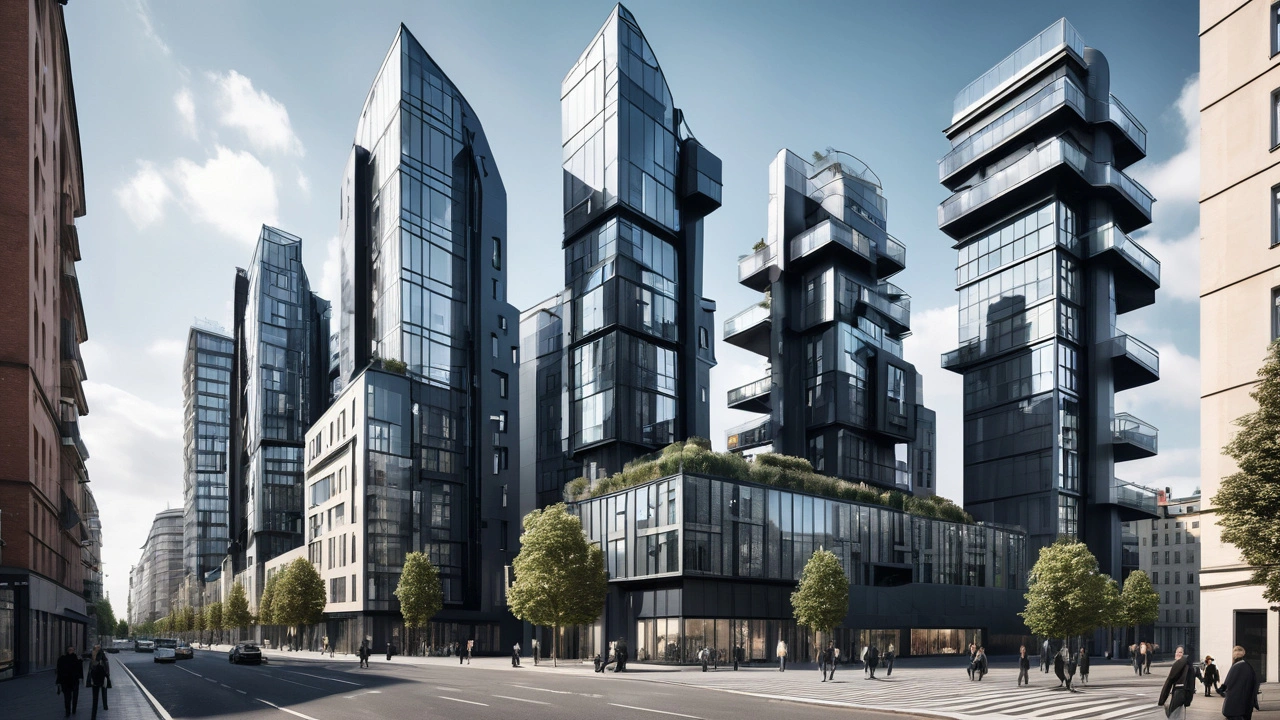Bold Architecture: How to Spot It and Use It
Bold architecture catches your eye and refuses to let go. It uses big moves—stretching scale, clashing materials, or shapes that look like they broke the mold. You see it in Baroque palaces, Art Nouveau facades, postmodern landmarks, and even modern adaptive reuse where old brick meets bright metal. What makes a building bold isn’t just looks; it’s a clear choice that tells a story.
Spot bold architecture by its silhouette. If a building reads easily from far away—an exaggerated roofline, a dramatic dome, or a cantilevered slab—it’s making a bold statement. Look for contrast: heavy stone beside glass, ornate cornices next to flat planes. Materials that shout—polished metal, exposed concrete, colorful tiles—often signal bold intent. Also notice how the design treats movement: sweeping stairs, deep overhangs, or unexpected cutouts invite you in or push you away on purpose.
How to use bold ideas in your space
Want bold without going overboard? Start with one strong element. Pick a single focal move like a bold roofline, a material change, or a colored panel and let the rest step back. Scale matters: a larger porch, taller windows, or higher ceilings change feel more than tiny trim. Use contrast smartly—pair raw textures with smooth finishes to create drama without clutter. Light and shadow are free tools; deep eaves and carved details cast shapes that read as bold at different times of day. If you rent or live in a small place, try bolder furniture, a statement light fixture, or a patterned wall instead of structural changes.
How to read bold buildings
Read bold buildings like a short story: who paid for it, what was its purpose, and what technology made it possible? A Roman arch or dome spoke of engineering power and public order. A Gothic Revival spire shouted tradition and moral seriousness. Postmodern quirks often reacted against strict modernism with irony and color. Look for signs of craftsmanship—mosaics, carved stone, or metalwork—that mark intent and skill. Check how the building sits in its neighborhood: does it dominate, blend, or purposely contrast? That context tells you whether boldness aimed to impress, to challenge, or to comfort.
Quick checklist for visiting or designing: silhouette, material, contrast, movement, light, and context. Take photos that show the whole form and a close detail to capture both big moves and small choices. Note how people use the space; bold design often affects behavior, for better or worse.
Try a small project: repaint a door in a bold color, add a cantilevered shelf, or replace a plain balustrade with a sculptural railing. For larger plans, sketch several versions and test one dramatic change first. If you work with a contractor, ask about materials that age well and about detailing that reads from the street. Small bold moves often give the biggest payoff. Start today now.

The Future of Constructivist Architecture: Bold Designs and Innovation
Discover the world of constructivist architecture, a movement that combines technology, practicality, and artistic vision. This article explores the history, core principles, notable examples, and future developments of constructivist designs. Find out how this architectural style pushes the boundaries of what's possible, offering tips for aspiring architects and enthusiasts.
Read more